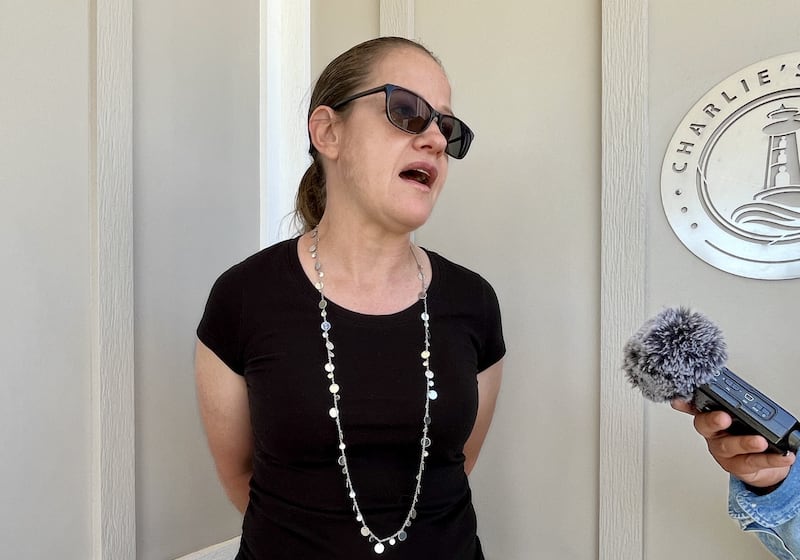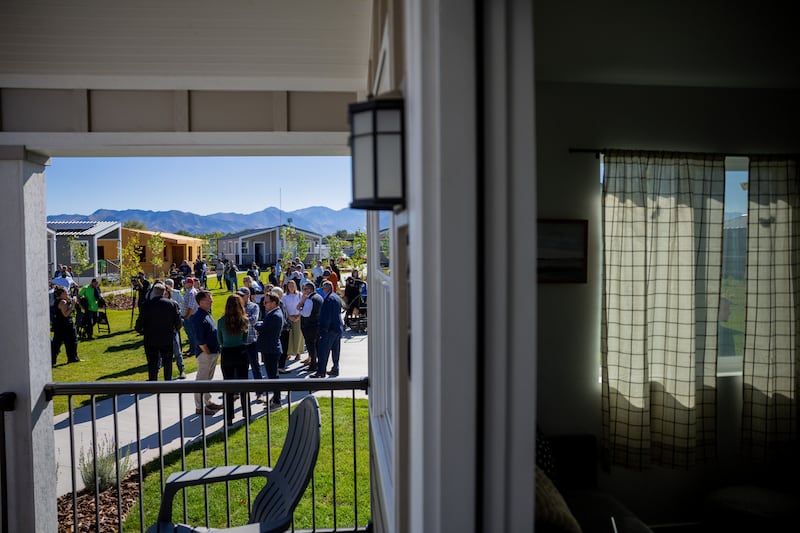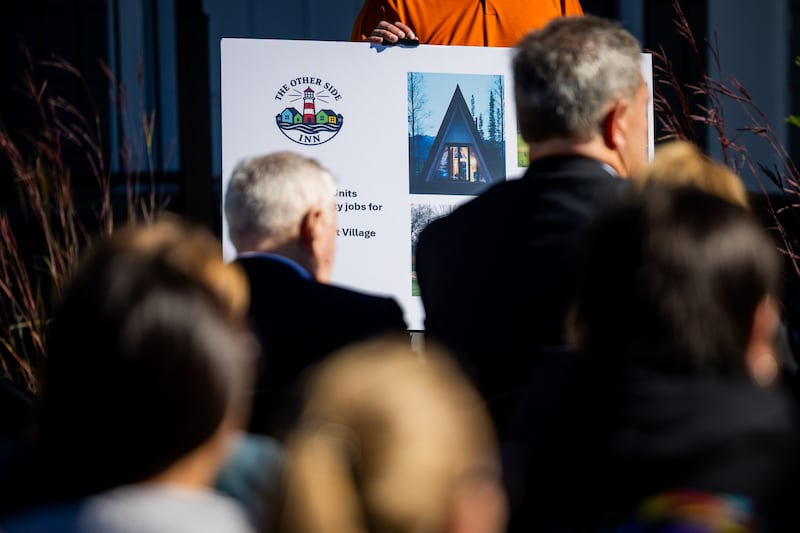Melissa Hepworth says she felt “an immense amount of peace” last month when she arrived at the Other Side Village, a new tiny home community growing in Salt Lake City’s Poplar Grove neighborhood.
It was essentially the first time she felt she had a home in about two decades, after dealing with many psychotic episodes, as well as multiple stints in jail, prison and psychiatric units, and sometimes living on the street. It was also nearly a year since she first checked into the Other Side Academy and began working to overcome her behavioral health challenges.
“I have all the skills I need. The most sacred part was going through the prep school and changing dramatically. It was a safety net for me,” she told KSL.com as she stood on the porch of one of the village homes.
The village, which offers housing for people like Hepworth who have experienced chronic homelessness and other challenges, is now on the verge of a major expansion. That’s thanks to $30 million worth of new donations secured for the Other Side Village, operators announced Tuesday. The donations came from several sources, including The Church of Jesus Christ of Latter-day Saints and Utah businesswoman and philanthropist Gail Miller.
It will help build hundreds more units and other facilities on the campus over the next few years.
“It takes a village to build a village,” said Ted Broman, the project’s co-founder.
Building a village
The first 32 homes of the Other Side Village opened at the end of 2024, providing residents experiencing homelessness with what they called a second chance. Construction of the first phase of the village is still ongoing, but Joseph Grenny, also co-founder of the Other Side Village, says it’s almost finished. Once complete, the village will feature 60 “deeply affordable” rental homes and other buildings that offer permanent supportive housing and supportive services.
All of the residents at the Other Side Village were once chronically homeless, meaning they spent at least a year living on the street. The average resident, Grenny says, has spent nine years without a place to call home, and typically has a mental, behavioral health or substance challenge they’ve worked to overcome through a program in their system.
“The people we’re trying to help are the toughest to help sometimes,” he said. “This is exactly the type of solution that helps people reinvent their lives.”
Hepworth, for example, said she had tried different rehabs, psychiatric units and medications, but she fell into a cycle bouncing between jail and homelessness. She heard about the Other Side Academy when it opened, but she found out the academy wouldn’t take in people taking some of the medications she was taking. She eventually reached a point where she decided to cut off some of her medications and enrolled about a year ago.

She said she spent 11 months working to better communicate her struggles, find ways to avoid overmedication and hold herself accountable, which she credits as turning points in her life. While she said it was uncomfortable at times, she eventually moved out of the system and into the village, landing jobs at a pair of the social enterprises that the academy runs.
“They just had everything that I needed,” she said.
The Other Side Academy created several social enterprise companies to help cover the operational costs of the village, while also providing jobs to those who are enrolled in the academy or live in the village after completing the program. These include a doughnut shop, a freeze-dried fruit snack brand and a moving company, while a hotel is being planned. The village will also host a Christmas market for a few days this December, Grenny said.
“The Other Side Village will eventually be self-reliant, meaning we don’t have to do ongoing fundraising,” he said, noting that the Other Side Donuts generated about $750,000 in revenue over the past few months, which he says shows that “even the most marginalized people have enormous potential.”

While also providing a roof over her head, Hepworth said she’s grateful that she’s surrounded by neighbors who understand her experience because they’ve gone through similar experiences. That gives her additional people to lean on during difficult times.
“I definitely am a changed woman,” she said.
Grenny took time on Tuesday to acknowledge others who have worked to turn their lives around, such as Lori McQueen, who announced that she was able to study to become a registered nurse.
Expanding the village
Broman and Grenny say they’re hopeful a second phase of construction will lead to more success stories. The $30 million they’ve collected thus far puts them more than halfway to their goal of completing the village, which will ultimately feature 390 additional units, an event center, a medical and mental health center for west side residents and a retail operation.
The medical center, to be run by Sacred Circle Healthcare, will offer a pharmacy, mental health services and medical care to village residents and others in the Glendale and Poplar Grove neighborhoods when it opens this winter, said Salt Lake City Mayor Erin Mendenhall.

Construction of the second phase is expected to begin early next year, following the receipt of some final city approvals, Grenny said. He expects it will take another two to three years to complete, although Broman said another $24 million is needed to reach the final vision.
Those who have donated to this point say it’s money well spent.
“We’ve supported the work taking place here for a long time because we believe in this vision. ... We support initiatives that restore dignity, open doors to opportunity and bring real hope,” Miller said. “This is more than housing.”
